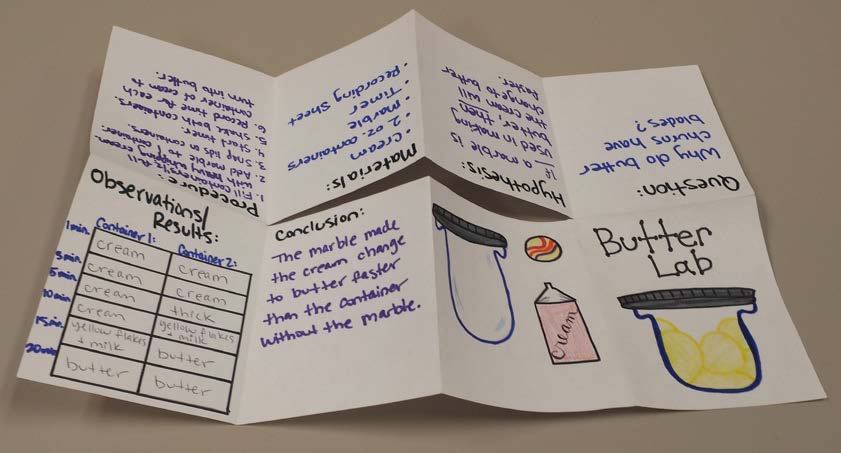Background Agricultural Connections
Fresh milk is a mixture of cream and milk. The cream is less dense than the milk causing it to separate and rise to the top where it can be skimmed off. The milk left behind is called skim or fat-free milk. When fresh milk is taken from the dairy farm to a milk processing plant, it is separated from the cream in order to mix the precise amount of cream and milk to make 1%, 2% or whole milk. This process is called standardization. To accelerate the separation of cream from milk on a large scale, dairy processing plants use a machine called a centrifugal separator to help with this process.
Milk purchased from a grocery store does not separate. This is possible due to a process called homogenization. Homogenization shears the fat globules in the cream into smaller pieces making the milk and cream the same density so it does not separate.
Butter is a dairy product made by churning cream to separate the buttermilk from the butterfat. Heavy cream is an emulsion. Tiny globules of fat are suspended in a watery solution. Churning the cream forces the fat globules to slam into one another. If they hit each other with enough force, they will stick together eventually forming a chunk of butter. After removing the butter, a watery liquid will remain with small butter grains floating in it. This liquid is called buttermilk. The butter is rinsed, pressed, and kneaded to remove any remaining pockets of buttermilk or water. Butter remains a solid when refrigerated, softens to a spreadable consistency at room temperature, and melts to a liquid consistency at 32-35°C (90-95°F).
A chemical change is a change that results in the formation of a new chemical substance through the making or breaking of bonds between atoms. A chemical change creates a new chemical substance that typically has different physical properties when compared to the original substance. When a substance has undergone a chemical change, the process cannot be reversed. A physical change is a change from one state (solid, liquid, or gas) to another without altering the chemical composition of a substance. When a substance has undergone a physical change, the process can be reversed.
Three basic states of matter found on Earth are solid, liquid, and gas. The term, colloid, describes a substance that is a combination of different states. Colloids are made of tiny particles of solid, drops of liquid, or bubbles of gas that are evenly distributed throughout a liquid. They are not dissolved in the liquid and do not settle to the bottom or float to the top. Emulsions and foam are two types of colloids. Milk and cream are emulsion colloids with tiny globules of fat thoroughly mixed throughout water. Whipped cream is a foam colloid with tiny air bubbles thoroughly mixed throughout liquid cream.
Turning milk into butter is a physical change because the milk is changed from a colloid (cream) to a solid (butter) without altering its chemical composition. This physical change is reversible. The butter can be melted and mixed with the leftover buttermilk to make cream again.
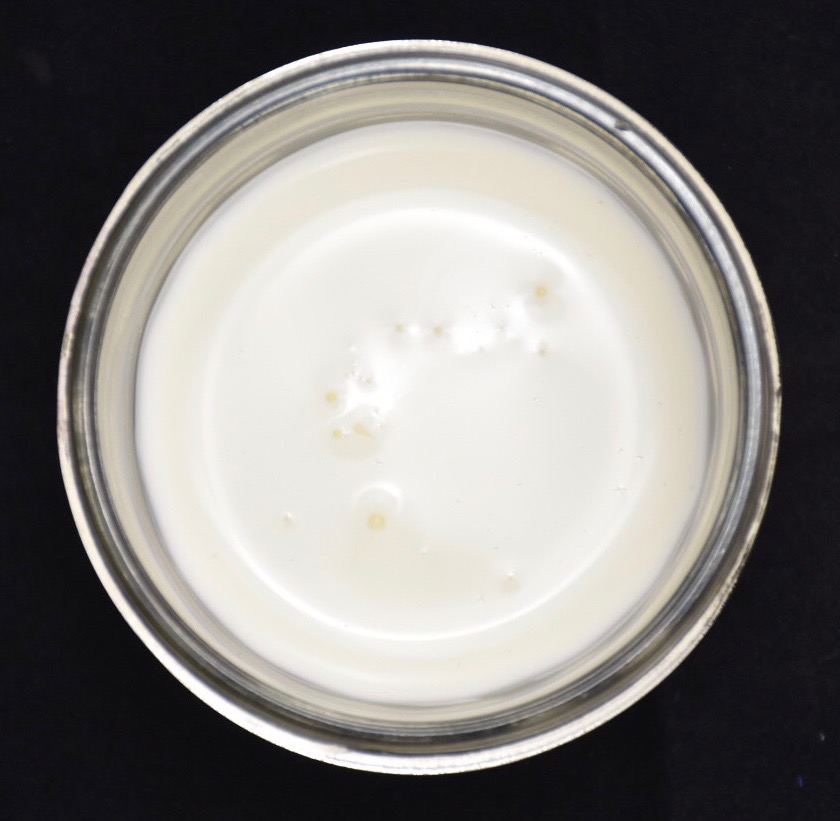 with a small jar, heavy whipping cream, a timer, access to a kitchen scale, crackers, and a butter knife.
with a small jar, heavy whipping cream, a timer, access to a kitchen scale, crackers, and a butter knife.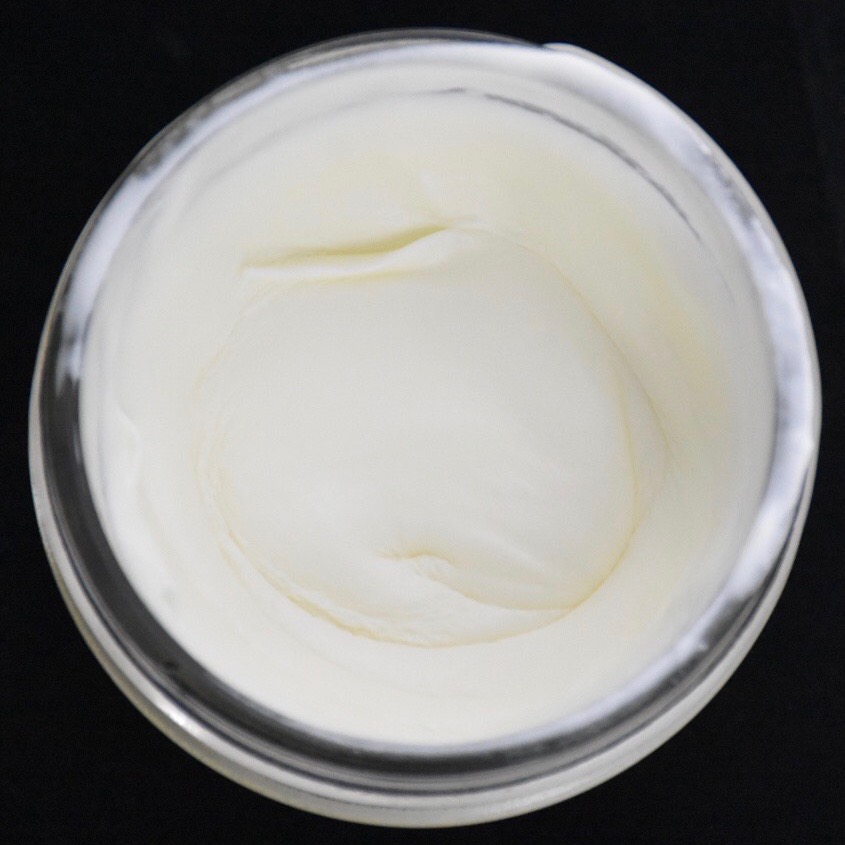 play music to encourage the movement.
play music to encourage the movement.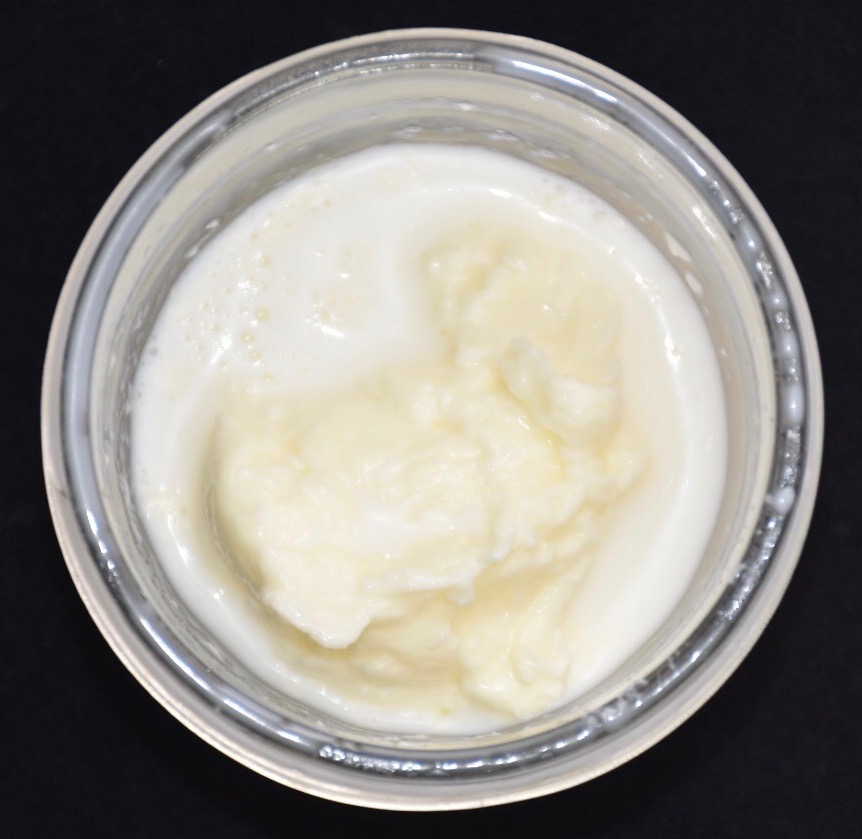 of the butter and buttermilk. Did the weight change? Explain to the students that the weight of matter stays the same when it changes form.
of the butter and buttermilk. Did the weight change? Explain to the students that the weight of matter stays the same when it changes form.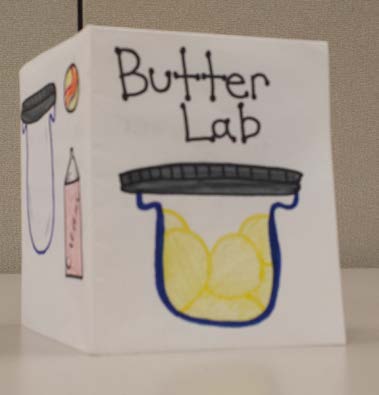 may affect the outcome. Temperature, time, container size, types of milk, and the addition of an agitator like a marble are examples of variables that can be tested.
may affect the outcome. Temperature, time, container size, types of milk, and the addition of an agitator like a marble are examples of variables that can be tested.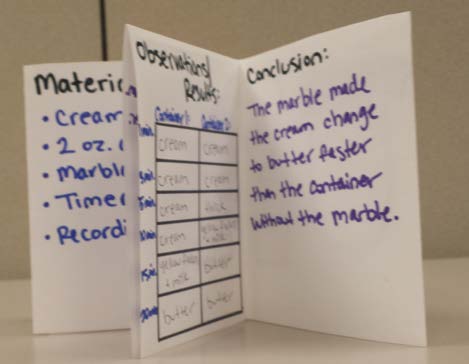 each student create a foldable booklet for recording their data and observations and sharing their groups' findings.
each student create a foldable booklet for recording their data and observations and sharing their groups' findings.